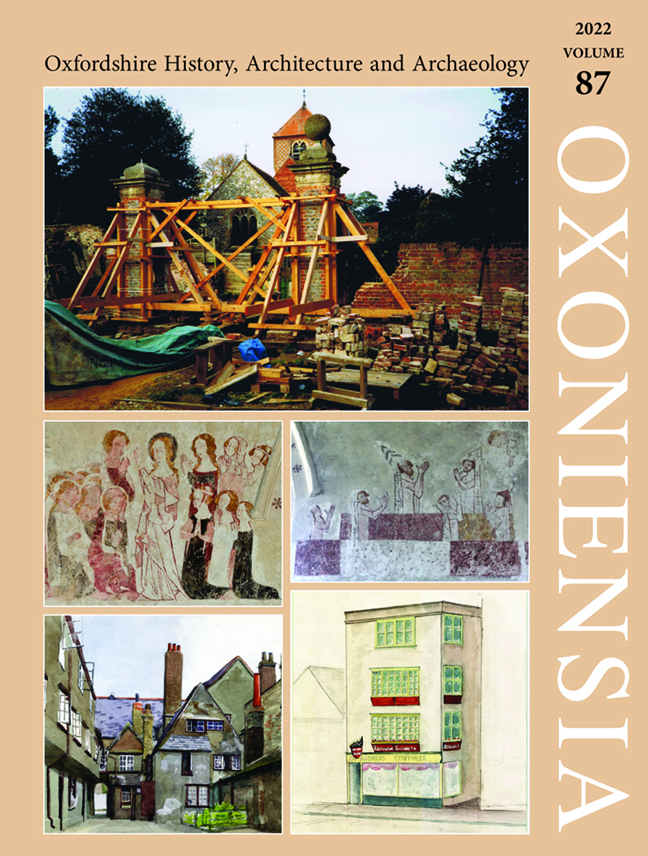A Late Anglo-Saxon and Anglo-Norman Extramural Suburb at Wallingford
Published online by Cambridge University Press: 17 February 2024
Summary
SUMMARY
Excavations in 2018–19 at Morrell Place, Wallingford revealed occupation dating primarily from the late Anglo-Saxon (c.950–1050) and Anglo-Norman (c.1050–1150) periods, and ending in the first half of the thirteenth century. The west end of the site fronted onto the Reading Road leading south from the Anglo-Saxon burh, and lay just 80 m from its earthen defences. The site layout may indicate that there was a wide market area just south of the burh in the late Anglo-Saxon period, which narrowed during the Norman period. There were several ditches and linear pit groups on a west-north-west to east-south-east alignment, suggesting that the site was perhaps divided into plots. Three sunken-featured buildings were found, including two rectangular examples with sunken floors and evidence of wooden supports and wooden or wattle linings. Pits were densely distributed across the site, many clustered into intercutting groups. The finds indicate domestic activity and textile manufacturing throughout the period of occupation, while in the Anglo-Norman period dyeing (evident from scores of potsherds stained with purple madder) was added, together with skin-processing and horn-working.
Morrell Place, formerly the site of Wallingford's police station, lies on the east side of Reading Road (centred at NGR 460710 189010) on terrace Sand and Gravel deposits at a height of just over 45 m above OD, and slopes gently eastwards towards the River Thames – less than 200 m away – and its alluvial floodplain (Fig. 1). The site was evaluated by trenching in 2013, which revealed well-preserved archaeological features of late Anglo-Saxon to medieval date. Following the closure of the police station, Winslade Investments (Reading Road, Wallingford) Ltd commissioned Oxford Archaeology (OA) to undertake excavation of the house footprints (Areas 1–5) and soakaways (Areas 6–10) and a watching brief on service runs, prior to housing development (Fig. 1). These covered an area of 935 sq m and took place between November 2018 and June 2019, following a brief provided by Richard Oram of Oxfordshire County Council Archaeological Services, who also monitored the work.
This report provides a summary account of the late Anglo-Saxon, Anglo-Norman and medieval discoveries from the site, significantly enhancing understanding of Wallingford’s earliest suburbs. Struck flint of probable late Mesolithic date and a little Roman tile and pottery were also found, together with limited post-medieval features and finds.
- Type
- Chapter
- Information
- Oxoniensia , pp. 395 - 444Publisher: Boydell & BrewerPrint publication year: 2022



